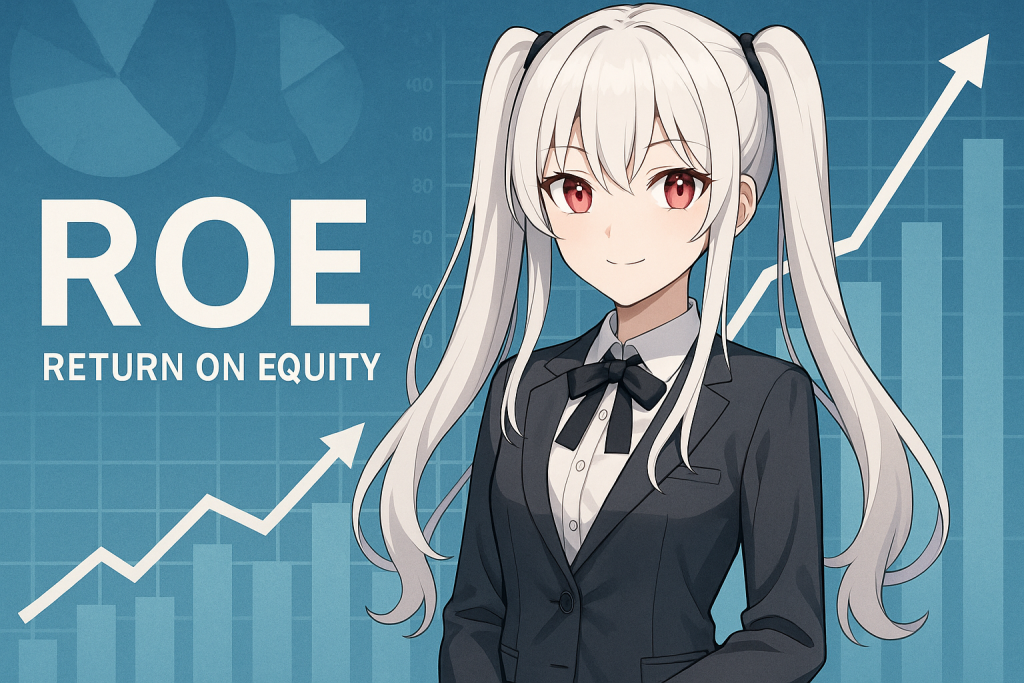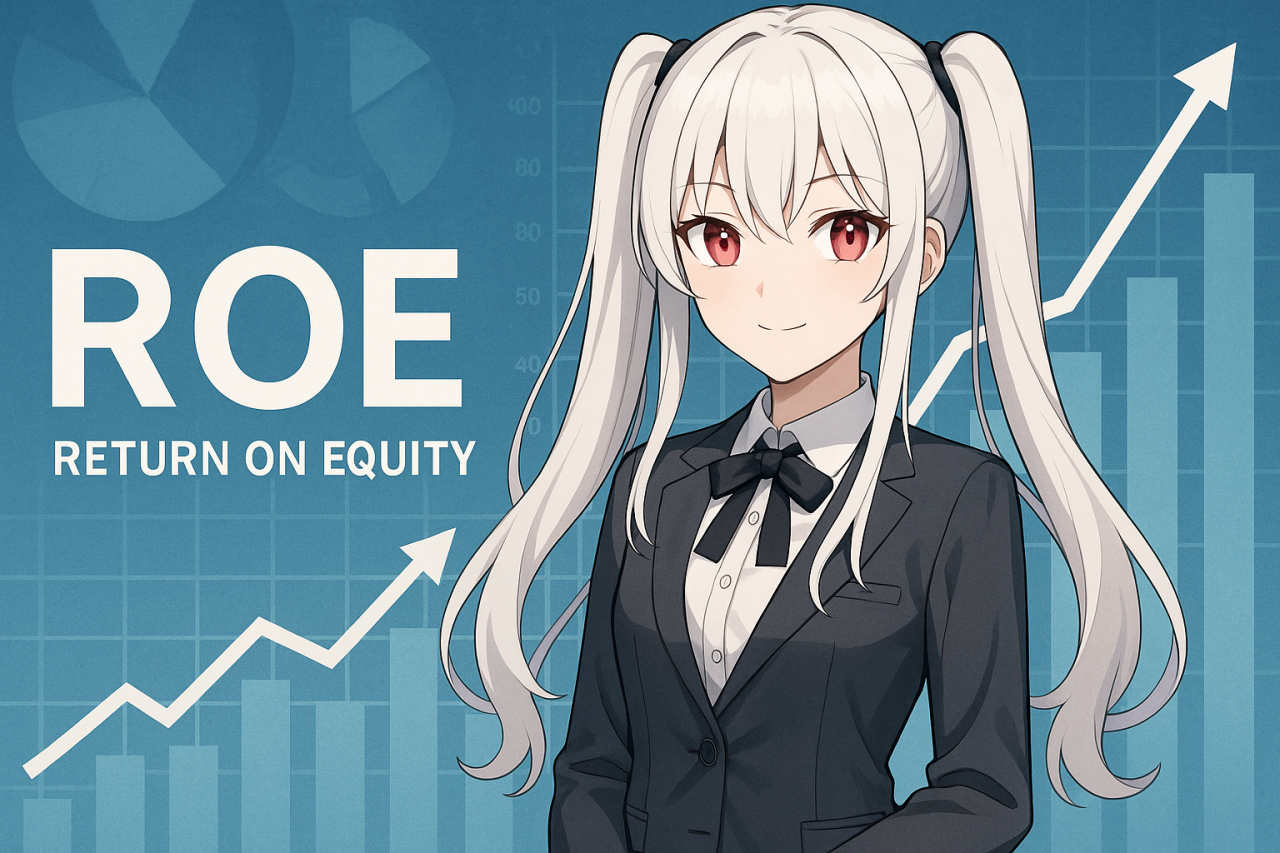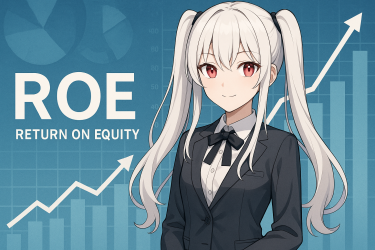ROE (Return on Equity) is an important metric that indicates a company’s profitability. This article explains the basics of ROE, how to calculate it, benchmarks, and improvement measures to enhance corporate value. Using specific services such as Money Forward Cloud Accounting as a reference, understand ROE and apply it to your business strategy.
What is ROE (Return on Equity)?
Basic Concept of ROE
ROE (Return on Equity) is an abbreviation for Return on Equity, and it measures how efficiently a company uses the equity entrusted by shareholders to generate profit. Because it indicates the ratio of profit to equity, it is considered very important for evaluating a company’s profitability and management efficiency.
For investors, it indicates how efficiently invested capital generates returns, making it an important criterion for investment decisions. A higher ROE means the company is earning more profit with less equity, indicating better management efficiency. However, ROE alone cannot determine everything about a company; it is essential to analyze it in combination with other financial indicators. Considering factors such as growth potential, future prospects, and financial soundness allows for a more comprehensive evaluation.
Formula and Calculation Method
ROE is calculated using the following formula.
ROE (%) = Net Income ÷ Equity × 100
Here, Net Income is the final profit for the company’s accounting period and can be obtained from the income statement. Equity is listed in the shareholders’ equity section of the balance sheet and includes items such as shareholder capital and retained earnings. Equity represents the company’s assets minus liabilities, meaning funds that are not subject to repayment obligations.
When calculating ROE, it is important to accurately determine the amounts of net income and equity. You may also use the average of equity at the beginning and end of the accounting period, taking into account changes in equity during the period. Calculating an accurate ROE allows for a more objective assessment of a company’s profitability.
ROE Benchmarks and Industry Averages
Generally, an ROE of 10% or higher is often considered indicative of a high-quality company. However, this is only a general guideline, and the appropriate level varies by industry and company size. For example, high ROE is expected in growth industries, while stable ROE is emphasized in mature industries.
Additionally, companies with a low equity ratio tend to have higher ROE, but this also increases financial risk, so caution is needed. When comparing with peers, it is important to refer to the industry average ROE. Companies that achieve ROE above the industry average are considered to have a competitive advantage. However, it is necessary to evaluate comprehensively, taking into account not only ROE but also the company’s growth prospects and earnings stability.
Difference between ROE and ROA
What is ROA (Return on Assets)
ROA (Return on Assets) is an abbreviation for Return on Assets, and it measures how efficiently a company uses its total assets to generate profit. Since it shows the ratio of profit to total assets, it is an important indicator for evaluating a company’s asset utilization capability.
Unlike ROE, ROA is calculated based on total assets that also include debt. Therefore, ROA is less affected by a company’s financial leverage. A higher ROA indicates that a company is efficiently using its total assets to generate profit, reflecting strong asset utilization capability.
Because the appropriate level of ROA varies by company size and industry, caution is needed when comparing it to peers. Additionally, combining ROA with other financial indicators allows for a more comprehensive assessment.
Choosing Between the Two Indicators
ROE and ROA are indicators that evaluate a company’s profitability from different perspectives.
- ROE is used to measure the efficiency of shareholders’ equity and is an important metric for investors.
- ROA is used to measure the efficiency of total assets and helps evaluate a company’s asset utilization capability.
Which indicator is more important depends on a company’s financial structure. For example, in companies with a high equity ratio, ROE may be more important than ROA. Conversely, in companies with a high debt ratio, ROA may be more important than ROE.
Analyzing both ROE and ROA provides a deeper understanding of a company’s profitability. Understanding the characteristics of each metric and using them appropriately based on the company’s situation is essential.
Using Money Forward Cloud Accounting
By implementing Money Forward Cloud Accounting, you can automatically aggregate and analyze daily accounting data, and easily create financial statements. This allows you to automatically calculate financial metrics such as ROE and ROA, and grasp the business situation in real time. Additionally, it is easy to compare with past data and budgets, contributing to faster decision-making.
Money Forward Cloud Accounting is used by companies ranging from small and medium-sized enterprises to large corporations. As a cloud-based accounting software, it offers the advantage of being accessible from anywhere, regardless of location or time. It is recommended to actively use it as a tool that contributes to improving corporate efficiency and productivity.
Strategies to Increase ROE
Improving Profitability
To increase ROE, it is first important to improve profitability. To improve profitability, you need to either increase sales or reduce costs.
- Increase sales can be achieved by developing new products or revising marketing strategies. Expanding sales channels for existing products is also effective.
- Reduce costs can be achieved by streamlining business processes or reviewing the supply chain. Cutting unnecessary expenses is also important.
Improving profitability requires continuous effort, but it is one of the most important factors for increasing ROE. It is important to devise more effective strategies through market research and understanding customer needs.
Improving Asset Efficiency
Improving asset efficiency is also one of the important strategies for increasing ROE. Asset efficiency refers to a metric that shows how efficiently a company utilizes its assets to generate sales.
To improve asset efficiency, it is effective to sell unnecessary assets or optimize inventory management. Shortening the collection period for accounts receivable is also important. Enhancing asset efficiency improves total asset turnover, leading to higher ROE. It is worthwhile to consider methods such as effective utilization of idle assets or leaseback. Regularly reviewing assets and striving for efficient asset management is important.

Optimizing Financial Leverage
Financial leverage refers to increasing the return on equity by using debt. Properly managing the debt ratio can increase ROE.
However, excessive debt increases financial risk, so caution is needed. If the debt ratio is too high, interest expenses rise and the business situation may deteriorate. Conversely, if the debt ratio is too low, ROE may decline. The appropriate debt ratio varies by industry and company size.
Using corporate cards such as Sumitomo Mitsui Card can also be effective in streamlining expense management. By using a corporate card, you can consolidate expense payments, leading to more efficient expense processing and improved cash flow.
Points to Consider in ROE Analysis
Impact of Temporary Factors
ROE can fluctuate significantly due to temporary factors. For example, accounting treatments or the occurrence of temporary gains or losses can cause ROE to rise or fall temporarily.
Therefore, when analyzing ROE, it is important to consider multi-year trends. Rather than judging based solely on a single year’s ROE, you should consider the historical trend of ROE and future projections to make a comprehensive assessment. Additionally, calculating adjusted ROE to exclude temporary fluctuations can be effective.
Consideration of Industry Characteristics
The average ROE varies significantly across industries. For instance, high ROE is expected in growth industries, while stable ROE is emphasized in mature industries. Therefore, when comparing with peers, it is necessary to consider industry characteristics.
When comparing companies from different industries, ROE alone is insufficient. You must consider industry growth, competitive environment, and company size to make a comprehensive judgment. Consulting industry experts and analysts can also be helpful.
Importance of Comprehensive Financial Analysis
ROE is one of the important indicators for evaluating a company’s profitability, but it cannot fully assess the company on its own. It is important to analyze it comprehensively alongside other financial metrics such as ROA and equity ratio.
- ROA is an indicator that shows the ratio of profit to total assets, and it helps evaluate a company’s asset utilization capability.
- Equity Ratio is an indicator that shows the proportion of equity to total assets, and it helps evaluate a company’s financial soundness.
By analyzing these indicators comprehensively, you can gain a deeper understanding of a company’s profitability, asset utilization, and financial soundness.
Summary
ROE (Return on Equity) is an important metric that shows how efficiently a company uses its equity to generate profit. By understanding how to calculate ROE and implementing improvement measures, and by leveraging tools such as Money Forward Cloud Accounting, you can enhance corporate value.
Implementing strategies such as improving profitability, enhancing asset efficiency, and optimizing financial leverage can raise ROE. However, it is important to conduct comprehensive financial analysis using other metrics like ROA and equity ratio in addition to ROE. You should also consider temporary factors and industry characteristics when analyzing ROE. Continuous effort and a holistic perspective can lead to increased corporate value.
We hope you find this article helpful in improving your company’s ROE and enhancing corporate value.
Reference Links
【わかりやすく解説】ROEとは?企業の実力を示すのページです。「株」や投資信託を始めたい初心者の方に最適なネット証券会社…











